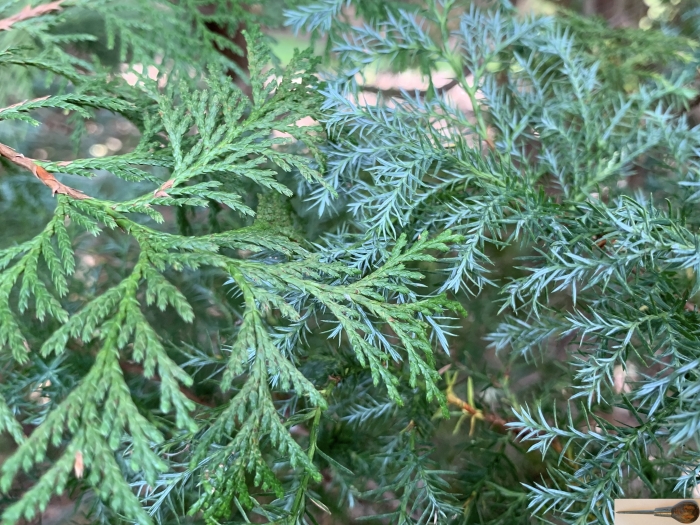Sawara Cypress
(Chamaecyparis pisifera)
Sawara Cypress (Chamaecyparis pisifera)
/
/

KATHERINE WAGNER-REISS
CC BY-SA 4.0






























Estimated Native Range
Summary
This tree is valued for its versatility and ornamental qualities, making it a popular choice for parks, gardens, and urban landscapes. It is also used for bonsai and as a specimen tree. Sawara Cypress prefers full sun to part shade and requires medium amounts of water, thriving in well-drained soils. It is adaptable to a range of soil types, including clay, loam, and sand, provided they are well-draining. Cultivars offer a variety of forms and colors, such as the dwarf ’Boulevard’ with blue-gray foliage, and ’Golden Mop’ with its distinctive golden-yellow foliage. While generally disease-resistant, it can suffer from root rot if planted in poorly drained soils and can be affected by cypress canker. It is also sensitive to air pollution and salt spray.CC BY-SA 4.0
Plant Description
- Plant Type: Tree
- Height: 50-70 feet
- Width: 10-20 feet
- Growth Rate: Slow
- Flower Color: N/A
- Flowering Season: Non-Flowering
- Leaf Retention: Evergreen
Growth Requirements
- Sun: Full Sun, Part Shade
- Water: Medium
- Drainage: Medium
Common Uses
Bank Stabilization, Bird Garden, Border Plant, Deer Resistant, Drought Tolerant, Hedges, Potted Plant, Rabbit Resistant, Rock Garden, Street Planting
Natural Habitat
Moist, well-drained soils in the mountain regions of Japan
Other Names
Common Names: Sawara False Cypress, Cyprišek Hrachonosný, Erbsenfrüchtige Scheinzypresse, Sawara-Scheinzypresse, Sawarazypresse, Ciprés De Sawara, Cyprès Du Sawara, Cyprès À Pois, Szavára Álciprus, Cipresso Giapponese
Scientific Names: , Chamaecyparis pisifera, Chamaecyparis pisifera var. filifera, Chamaecyparis pisifera f. filifera, Chamaecyparis filifera, Chamaecyparis plumosa, Chamaecyparis pisifera f. squarrosa, Chamaecyparis pisifera var. plumosa, Cupressus pisifera, Chamaecyparis pisifera f. aurea
GBIF Accepted Name: Chamaecyparis pisifera (Siebold & Zucc.) Endl.